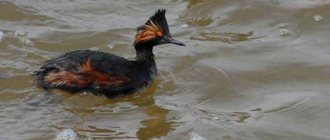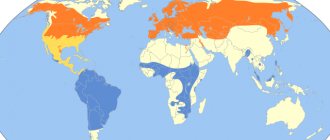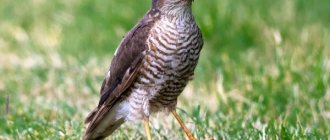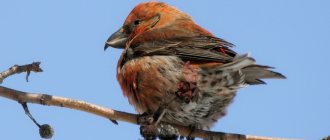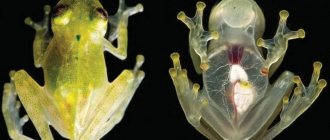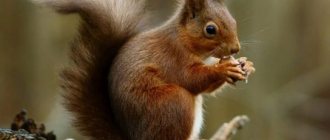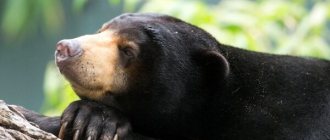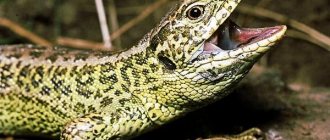- Wild animals
- >>
- Birds
The dodo bird or Mauritian dodo is one of the most mysterious and interesting representatives of birds that have ever lived on Earth. The Mauritian dodo managed to survive in prehistoric times and survive until our times, until it encountered the main enemy of all animals and birds, man. The last representatives of this unique bird died more than three centuries ago, but fortunately many interesting facts about their life have been preserved to this day.
The dodo bird lived on the island of Mauritius
Landscape of the island of Mauritius
The island of Mauritius is located in the Indian Ocean approximately 1100 km east of Madagascar. Once upon a time in the Pleistocene era, a very lost flock of pigeons ended up on this island. They thrived in this new environment, gradually growing into a flightless dodo bird weighing 23 kg. The dodo did not encounter humans until the first Dutch settlers landed on Mauritius in 1598. Less than 65 years later, the Mauritian dodo became completely extinct, with the last confirmed sighting of this unfortunate bird being made in 1662.
Dodos had no natural enemies
Before the advent of man, Mauritius had excellent conditions for dodos: there were no predatory mammals, reptiles or even large insects, and therefore there was no need to create any natural defense mechanisms. Dodos were extremely trusting birds; they were not at all afraid of humans, which made them very easy prey for the colonists. In addition, dodos were hunted or their nests were destroyed by cats, dogs and rats that came to the island along with humans.
Features of character and lifestyle
Photo: Dodo bird, or dodo
Due to the ideal conditions prevailing on the island, there were no threats from outside for the birds. Feeling completely safe, they had a very trusting and friendly character, which later played a fatal mistake and led to the complete extinction of the species. The approximate lifespan was about 10 years.
Basically, the birds kept in small flocks of 10-15 individuals, in dense forests, where there was a lot of plants and necessary food. A measured and passive life led to the formation of a large belly, which practically dragged along the ground, making the birds very slow and clumsy.
These amazing birds communicated using screams and loud sounds that could be heard at a distance of more than 200 meters. Calling each other, they began to actively flap their small wings, creating a loud sound. With the help of these movements and sounds, accompanying all this with special dances in front of the female, the ritual of choosing a partner took place.
A pair between individuals was created for life. The birds built nests for their future offspring very carefully and carefully, in the form of a small mound, adding palm leaves and all kinds of branches there. The incubation process lasted about two months, while the parents very ardently guarded their only large egg.
Interesting fact: In the process of incubating the egg, both parents took part in turns, and if an alien dodo approached the nest, then an individual of the corresponding sex of the uninvited guest was driven out.
The dodo couldn't fly
Active flight requires a lot of energy, so nature only retains this adaptation when absolutely necessary. After the pigeons found themselves on this paradise island, they gradually lost their ability to fly, while at the same time increasing to the size of a turkey.
Loss of the ability to fly is common in different groups of birds. It is observed in penguins, ostriches and chickens, not to mention the extinct giant birds of the family Fororacos, which took the place of predatory dinosaurs only a few million years after their extinction.
What does a hoopoe eat?
Photo: Forest Hoopoe
Prefers to feed alone, more often on the ground, less often in the air. Strong and rounded wings make these birds fast and maneuverable when chasing swarming insects. The hoopoe's foraging style is to move across open areas, stopping to examine the surface of the soil. The discovered larvae and pupae of insects are removed with the beak or dug out with strong legs. The hoopoe's diet mainly consists of: large insects, sometimes small reptiles, frogs, seeds, berries.
In search of food, the bird will explore piles of leaves, use its beak to pick up large stones and peel away bark.
Hoopoe food items include:
- crickets;
- locusts;
- May beetles;
- cicadas;
- ants;
- dung beetles;
- grasshoppers;
- carrion eaters;
- butterflies;
- spiders;
- flies;
- termites;
- woodlice;
- centipedes, etc.
Less often it tries to catch small frogs, snakes and lizards. The preferred prey size is around 20–30 mm. Hoopoes hit large prey on the ground or stone to kill and get rid of indigestible parts of insects, such as legs and wings.
Having a long beak, it digs into rotten wood, manure, and makes shallow holes in the ground. Very often, hoopoes accompany grazing livestock. It has a short tongue, so sometimes it cannot swallow prey from the ground - it throws it up, catches it and swallows it. Large beetles are broken into pieces before use.
The Dodo bird laid only one egg at a time
Evolution is an economical process: each species will produce just enough offspring to maintain a stable population size. Since the dodos had no natural enemies, the females began to lay only one egg per nest. Most other birds lay multiple eggs so that at least one chick can avoid predators and survive. This reproductive strategy had disastrous consequences. Macaques brought by Dutch settlers began to destroy dodo nests, and cats, rats and pigs roaming freely in Mauritius began to hunt chickens. Thus, almost overnight, the dodo birds were unable to reproduce their own population.
Closest relative: Nicobar pigeon
Genetic analysis of the preserved remains of the dodo has shown that its closest living relative is the Nicobar (maned) pigeon. This small bird lives on the islands of the Pacific and Indian oceans. The Nicobar pigeon leads a terrestrial lifestyle, but has retained the ability to fly into trees in case of danger. Another closely related species, now extinct, was the Rodrigues Dodo, which lived on Rodrigues Island in the Indian Ocean. Like the dodo, the Rodriguez dodo laid only one egg at a time, and was completely unprepared for the humans who landed on its island in the 17th century.
Reproduction
These unique birds mate for life. The mating season lasted throughout the year. It was accompanied by special dances, during which the males beat their wings loudly, after the dance the female could choose a partner.
There was only one egg in the clutch, it was hatched for 50 days, and both parents took part in raising the chick. They could also make various sounds, one of which resembled the name of the bird itself, “DO-DO.” Taking this opportunity, we would like to offer you to listen to a collection of a variety of sounds made by birds; to do this, follow this link.
For some time the dodo bird was called the "Wallowbird"
Very little time passed between the discovery of this bird and its disappearance, but in those 64 years a great deal of confusion arose. Shortly after its discovery, a Dutch captain named the dodo a wallowbird, and some Portuguese sailors called it a penguin. Modern philologists are still not sure about the origin of the name “dodo”. It may have come from the Dutch word "dodoor", meaning "sloth", or from the Portuguese "doudo", meaning "crazy".
Nutrition
The long, curved and thin beak, without which the description of the hoopoe cannot be exhaustive and complete, turns out to be a very useful tool for these birds in searching for food. After all, a bird, getting food for itself, rummages with it on bare soil not covered with greenery or in low-growing grass.
Its prey is usually small invertebrates. For example, a large victim of a feathered predator may be a mole cricket - an insect that loves to swarm in the soils of warm sunny plains, tearing up the ground with its forelimbs. Snatching such creatures from the depths of the soil and holding them in its beak, the hoopoe hits the insect with all its strength on the ground, stunning it.
Then it either eats it or takes it to its chicks. The beak is also a tool that helps these birds, like the woodpecker, a bird similar to the hoopoe in this sense, with its long nose to extract insects, pupae and larvae from the insides of old stumps and tree bark. The hoopoe is not afraid of the stings of bees and wasps, so these insects also serve as excellent food for these creatures.
Also among insects, the bird prefers to feast on spiders, annoying flies, grasshoppers, butterflies and other small creatures of this kind. It happens that snakes, lizards, and frogs become victims of this bird.
It is believed that while protecting its chicks, the hoopoe attacks the enemy and pecks out his eyes.
Sometimes, choosing areas to live near populated areas, hoopoes begin to feed on food waste, which they find in landfills. And the bird’s considerable length of beak again helps the bird dig through garbage and manure.
Several specimens of the dodo survive
Despite extensive hunting by the Dutch and Portuguese settlers of Mauritius, several live dodo specimens were brought back to Europe. However, most of these unfortunate birds did not survive the long journey. Today, these once numerous birds are represented by only a small collection of specimens: the Oxford Natural History Museum houses a head and one leg, and the Zoological Museum of the University of Copenhagen and the National Museum of Prague contain fragments of a skull and leg bones.
Dodo bird character from the fairy tale "Alice in Wonderland"
Illustration for the first edition of “Alice in Wonderland”
In culture, in addition to the phrase “dead as a dodo,” the dodo bird is represented in the book “Alice in Wonderland” by Lewis Carroll, where it organizes a “Running in a Circle” competition. It is widely believed that the dodo was a parody of Carroll himself, whose real name was Charles Lutwidge Dodgson. Because Carroll suffered from a stutter, he pronounced his real name as "Do-do-dodgson."
Interesting facts about the animal
Despite the sad outcome, important facts about the life of the dodo still remain. Thanks to the availability of records from sailors and travelers, biologists and anthropologists can build a complete picture of the life of the Mauritian dodo. Some facts about the dodo:
- Other birds were driven away from the nest by representatives of the same sex: if a female approached the egg during incubation, the male began to flap his wings and make loud sounds, calling on the “parent” for protection.
- The birds attracted each other in a special way: for about 4–5 minutes they performed 15–20 wing beats and danced in front of the female. They accompanied the dancing of the dodo with a characteristic cry. This caused a booming noise to be heard at a distance of 200 meters.
- Dodos chose a mate once and for the rest of their lives.
- The Europeans treated the birds cruelly, organizing competitions whose goal was to kill as many dodos as possible. Many tried to take the dodo with them. During the move, the birds shed tears, refused to eat, and died. It seemed as if they understood that they would never return to their homeland.
- The birds ate grains from the Calvaria tree, the hard shells of which they could crack with their massive beaks. Removing the seeds in this way allowed new sprouts of the tree to emerge. With the disappearance of the dodo, through a chain reaction, Calvaria stopped growing.
Several drawings of sailors who were the first to see the dodo have survived to this day. Thanks to them, anthropologists were able to make relatively accurate descriptions of the animal's life. The tragic fate of the Mauritian dodo is yet another proof of thoughtless human behavior.
As a sign of symbolism and remembrance, the Jersey Trust chose the dodo for its emblem, and the state symbol of Mauritius became a coat of arms topped with an image of a bird. Because of the slowness and clumsiness of the birds, sailors considered them stupid. But maybe it was the other way around?
There is an opportunity to revive the dodo
The preserved remains of the Mauritius dodo may be enough to recover some soft tissue - and therefore obtain fragments of its DNA. The dodo bird is genetically close enough to modern Nicobar pigeons, which makes them excellent candidates for the role of surrogate parents. Despite this, reviving the Mauritian dodo is not an easy task. It is much more likely that scientists will first succeed in resurrecting woolly mammoths or caring frogs.
Appearance and features
Photo: Dodo birds Mauritius
Despite being related to pigeons, the Mauritian dodo looked more like a plump turkey. Due to its huge belly, which practically dragged along the ground, the bird not only could not take off, but also could not run fast. Only thanks to historical records and paintings by artists of those times, it was possible to establish the general idea and appearance of this one-of-a-kind bird. The body length reached up to 1 meter, and the average body weight was 20 kg. The dodo bird had a powerful, beautiful beak, yellow-greenish in color. The head was small in size, with a short, slightly curved neck.
There were several types of plumage:
- gray or brownish tint;
- former color.
The yellow feet were similar to those of modern domestic birds, with three toes located in front and one behind. The claws were short, hook-shaped. The bird was adorned with a short, fluffy tail, consisting of feathers curved inward, giving the Mauritian dodo special importance and elegance. Birds had a sexual organ that distinguishes females from males. The male individual was usually larger than the female and had a larger beak, which he used in the fight for the female.
As evidenced by many records of those times, everyone who was lucky enough to meet a dodo was greatly impressed by the appearance of this unique bird. It seemed that the bird had no wings at all, since they were small in size and, in relation to their powerful body, were practically invisible.
